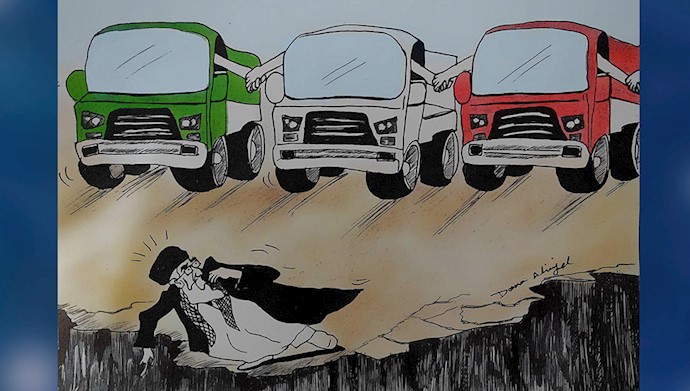Analysis by PMOI/MEK
Nov. 1, 2018 – In recent weeks, Iran has witnessed new waves of nationwide strikes. Different strata including truck drivers, bazaar merchants, teachers, and retired employees joined separate strikes and rallies to express their protests against the regime’s catastrophic policies. The strikes coincided with laborers’ protests in different cities making the situation harder to handle for the regime. A new characteristic that separates the mentioned strikes from previous ones is that all of them were organized and declared in advanced on social media. And the regime tried so hard to prevent the strikes from happening using various tricks and suppressive measures but to no avail.
The regime’s officials and state-run media have warned about the current situation. They fear that these protests go public and spread among other strata in the society, making a strong wave which can trigger more uprisings.
Ghorbanali Dorri-Najafabadi, former Minister of Intelligence of the Islamic Republic of Iran and current representative of supreme leader in Arak, linked the Iranian people to “enemies of” the regime saying, “our enemy is trying to exaggerate the social problems in order to arouse disappointment and frustration among us.”
Saeid Lavasani, the Friday prayer leader in Lavasan city, linked the protests to the regime’s enemies, saying, “Our enemy is behind the nationwide strikes to conduct a psychological war… they want to bring us to our knees.” Lavasani called the widespread news of protests and strikes as “fake news” which is worse and more dangerous than chemical war. He mentioned the Iranian opposition’s efforts saying, “one of the enemies’ plans is to conduct nationwide strikes; they wanted to create a crisis in the country by supporting the teachers’ strike which could affect half of the country; they believe that they can join these strikes and protests together and bring down our government.”
Abbas Akhoundi, a former minister in Rouhani’s cabinet, pointed out to a fundamental gap between the Iranian people and the government. Jamaran state-run website wrote, “Akhoundi believes that Iran doesn’t have a solid and firm policy and economy, therefore we’re stepping into the darkness. He also believes that all these have root in social problems.” Akhoundi believes that the society is living in a calm before the storm due to the wrong policies of the regime both inside the country and outside.
In addition, Mohammad Fazeli, a so-called “social expert” of the regime, warned about the inevitable continuation of uprisings. “The government’s measures are increasing the number of people whose rights were ignored. Many strata of the society are now deprived of their just rights, women, youth, poor people, etc. This is all because of the wrong policies of the government,” Fazeli told the state-run newspaper, Arman, in October.
All abovementioned facts show how the regime is worried about a new storm that will soon come.
In fact, any social and economic protests can potentially turn into an anti-governmental uprising. Last December, economic woes triggered demonstrations in various cities, but the protests soon spread to more than 140 cities in every corner of the country demanding regime change. The protesters chanted slogans against all factions of the regime. “Death to Khamenei and Rouhani”, “hardliners and reformists, the game is over” were chanted in cities of Iran.
Hamidreza Jalaiepoor, a former IRGC official who is now working under the cover of a journalist, told the state-run newspaper Iran in October: “I told Rouhani that all strata of the society have enormous potential for an earthquake and revolution. Iran is experiencing a new era, the January protest turned into violence as happened again in August’s protests in Kazerun and Khorramshahr.”
Now the regime itself reveals that protests have enormous potential for an earthquake and revolution. Of course, the regime’s officials name the Iranian thirst for freedom as “violence” as they do not want any Iranians to stand against their rule of dictatorship.
This is not Iran’s story. This is a part of the world’s history. The story of the revolution has been narrated time and again in many countries who have risen up to take back their freedom. They started with demonstrations over social shortcomings and economic woes, but led to protests against the dictatorship, and in the end a revolution that can give the people control of their destiny.





